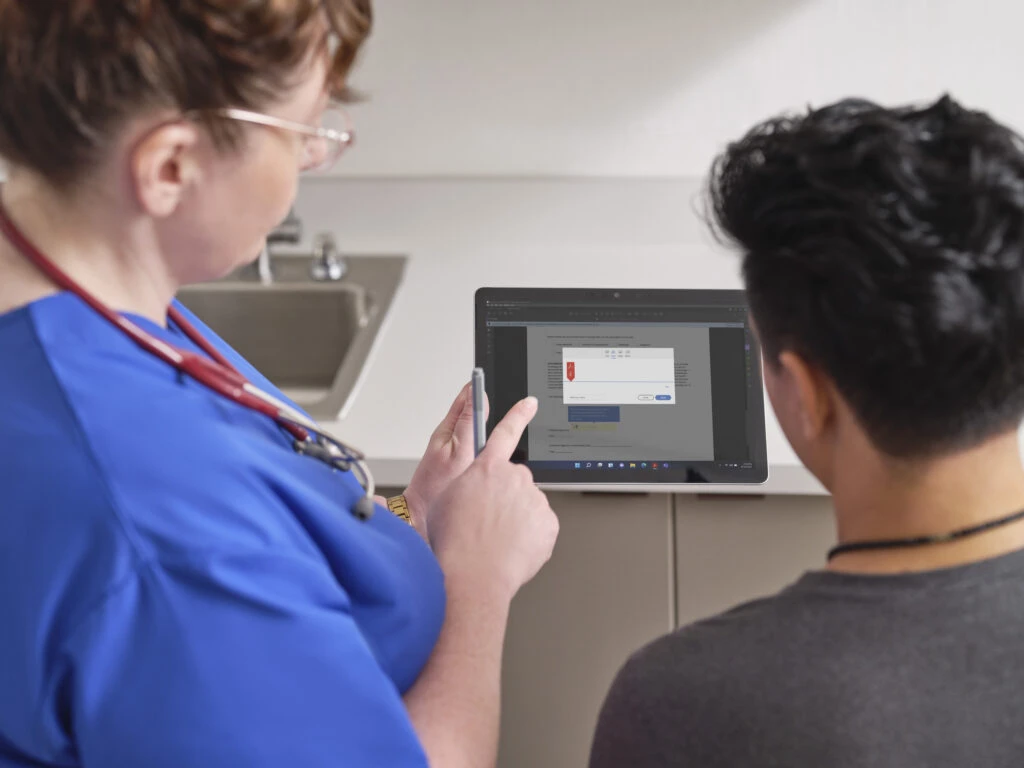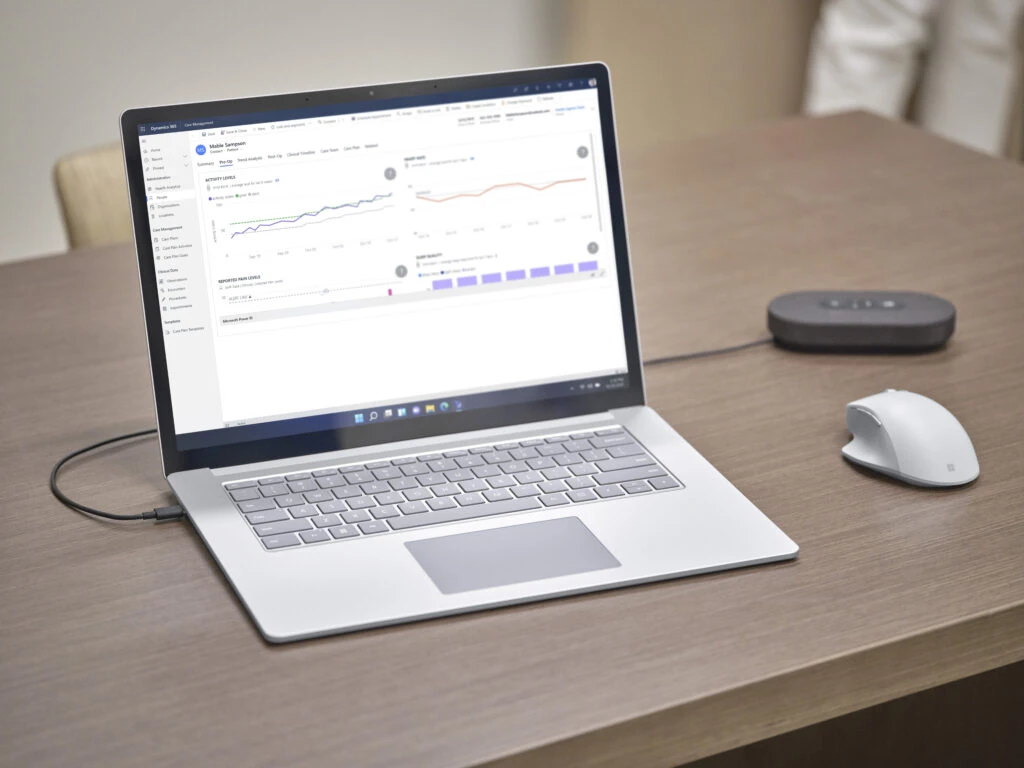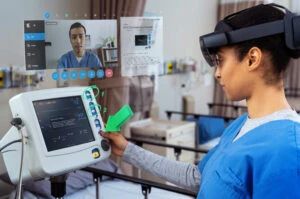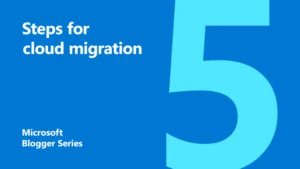
Powering the healthcare sector with data, technology and intelligence

Imagine a scenario where you’ve got a horse and cart, and you need to get from point A to point B. Using them will take you there, but if somebody offered you a jet, you wouldn’t think twice about switching to the better form of transport. You’d get there much faster and in more comfort. Plus, you’d be able to do a whole lot more on the way.
The equivalent in today’s healthcare industry is technology.
I’ve been working in this sector for nearly 30 years. It’s my passion, not just my job. Throughout this time, I’ve come to see technology and digitalisation as the very spine of healthcare – harnessing real, meaningful data insights and using them to save lives.
The past two years are testament to that. Whilst this time has presented great challenges for the sector, healthcare organisations deserve huge credit for responding to these issues positively and with unprecedented speed. At the same time, tech adoption has soared too, giving the industry a much-needed lifeline and allowing the development of a vaccine in just 18 months. This is a remarkable achievement.
But now that we’re looking ahead, even more needs to be done to embed technology into healthcare. How do we make sure that we exploit its transformational capabilities even more, and start to fully use jets rather than just a horse and cart?
It all starts with data
In 2020, I was invited to give a keynote speech at an event where I put up a slide that said:
“Data is seen as Gold Dust in any industry. In healthcare, that same data is the equivalent of Unicorn Dust”.
The point is still true. Healthcare data is an incredibly powerful tool. However, we’re still not making the most of it.

From social-economic variables to patient data, dietary information, hereditary data and more, organisations are combining different data sets to get insights on patterns and trends that can ultimately save lives.
This leads to a more predictive and precision-led type of medicine that’s moving care away from hospitals to the point of actual need. Organisations are no longer just treating something that’s already happened. They’re using data to predict what might happen to a patient in the future.
That is extraordinary, but it’s all the greater when you look at the ripple effects. Leveraging healthcare data means being able to carry out precision-led treatments. Also, it improves the accuracy, timeliness and delivery of care. At the same time, it offers the opportunity to decrease the need for repeat or ongoing treatment.
This approach can also positively impact the sustainability agenda and targets in this industry. Predictive and precision medicine can reduce footfall and traffic for consultations. This means we reduce the carbon emissions generated via travel as well as reducing the level of stress that citizens go through for repeat treatments.
The importance of securing and sharing data
An important part of intelligent healthcare is making sure that the data is securely made available to everyone authorised to use it when treating patients. That’s when things like open data and open platforms come in to enable healthcare as a secure ecosystem to treat patients.
Previously data would be collected by GPs and hospitals. Now patients are actively involved in the process. They can share their own data – such as blood pressure, vitals and blood levels – through medical devices and wearables.
This creates the need to build a secure, combined record for both GPs and patients that can accommodate all data feeds. Clinicians can then use it to have a more holistic, accurate and relevant health data record.
To support this natural progression, healthcare needs data platforms that can ingest data from multiple sources without duplication and compromising security.
As part of this process, the industry is finally shifting away from a siloed system whereby each organisation has its own data platform. They’re creating platforms that other medical institutions can feed data into. That data is secure, anonymised and protected, but open for anyone authorised to use it.
Inside the institutions that are leading the way

Having access to an enriched dataset – incorporating both healthcare and citizen updates – and being able to apply AI and machine learning to it can lead to deep patient insights, faster diagnosis and, ultimately, improved treatment.
One of the best parts of working at Microsoft is helping organisations analyse and select the solution that is right for them and make the most of it. It’s great to see how many facilities are turning to technology to achieve their goals.
A prime example is the Cleveland Clinic, which is using AI to identify patients at potential risk in the ICU by equipping Cortana, Microsoft’s voice assistant, with predictive and advanced analytics. Powered by Azure Machine Learning, the solution uses data collected from monitoring units in ICUs to predict if a patient will need to be administered specific medicines to prevent potential cardiac failure.
Another area that comes to mind is smart hospitals, where healthcare IoT is being used to keep patients safe by monitoring changes in their temperature, breathing and distress through smart beds, voice activated assistants and robots. All to alert nurses and doctors in case of potential emergency.
Outside of the hospital, emerging technologies are playing a key role in creating entirely new concepts of training that integrate mixed reality, AI and more. The use of mixed reality in healthcare to deliver training has significant benefits. Training surgeons and clinicians globally with the use of 3D models eliminates the need for cadavers, travel and large logistical programmes to deliver training quickly, safely and as close to reality as possible. We saw this happen during the pandemic, when many healthcare professionals came back to the frontlines to support the sector. Using mixed reality delivered an immersive experience. It help trained these resources with speed, and bolstered the community when we all needed it the most.
Shifting perceptions
If the data and the technologies are there, why is adoption only now starting to pick up?
That, for me, is very much a mindset issue. Patient data and technology often make people nervous about change. On top of that, healthcare organisations are focussed on saving lives, so there is limited time available to implement new solutions.
To make the best of these technologies requires increased collaboration within the healthcare community. This can be achieved by reducing replication of datasets and increasing the use of healthcare data standards to learn from that data. For example, the healthcare industry globally shared datasets looking at analysis of the coronavirus, patterns, trends, vulnerabilities to learn from it and to help each other fight against it.
As an industry and ecosystem, I believe that we owe it to ourselves and to everybody else to understand that technology is not complex, and it doesn’t have to be complex. Sometimes perception makes it more complicated than it is. But what it ultimately does is help the industry make things easier, accurate and more efficient.
My organisation is planning to implement more technology. Where should we start?

In the spirit of making things less complex, my advice for starting on intelligent healthcare is asking yourself: why do I want to make this change? What will this change enable?
Transformation for the sake of transformation is never successful. There must be a driving force behind it. The best place to start is mapping where and how you want to act. For example, you might want to contribute to green healthcare and the sustainability agenda. Embracing cloud solutions that don’t rely on on-prem locations is a tangible way of doing this. Technology can help you achieve this. So that could be your starting point.
Then, you must decide how you’ll measure your success and carefully understand what the outcomes will be. My advice is to not try and do everything at once. There’s a lot to do and a lot to take on. Especially when your primary focus is to deliver the best healthcare and save lives. Be realistic in terms of the type of journey you want to go on and the time it will take.
People are key to success in change. Make sure that your teams are on-board with the journey too. If we don’t provide the right training and the right context to understand the workflows and the pathways around healthcare, then we’ll have missed a trick. Adopting a patient/employee-centric design approach is also something I’d recommend highly.
And then lastly, start small, be flexible and build it up from there. The reason behind many organisations’ success with digital transformation is making sure that each time they implemented something new, they went back to the table to discuss what’s working and what isn’t working, and how to do things differently for the next cycle.
Having that level of maturity and positive attitude towards digital transformation will be, by far, the best way to bring intelligence to healthcare.
Find out more
Engage patients in the digital age
Boosting healthcare delivery with cloud solutions
The transformation imperative in healthcare
About the author

Hema is Chief Architect/CTO for Healthcare across EMEA for Microsoft, Senior Executive Leader and Former Director of Government & Public Sector UKI for Google Cloud. With 27 Years’ experience in Technology, she is a technologist, evangelist and futurist with a specialism in Public Sector and Healthcare. Hema is passionate about using technology for good, to improve business outcomes and benefits whilst nurturing the environment and working towards sustainability goals. She is also an active supporter of Women in Technology, instrumental in many initiatives leading, enabling, supporting and furthering the Women in Tech Network
Hema is well versed in the design, development, delivery and support of transformational change across the majority of industry sectors, including specialising in capabilities for multi-cloud, emerging technologies, software defined data centre, architecture and management as examples.




